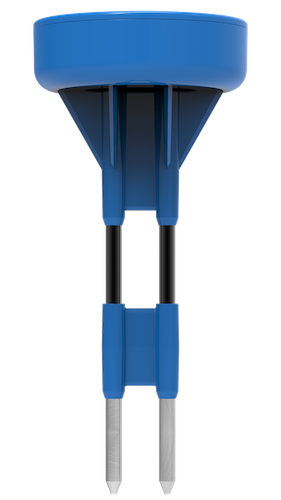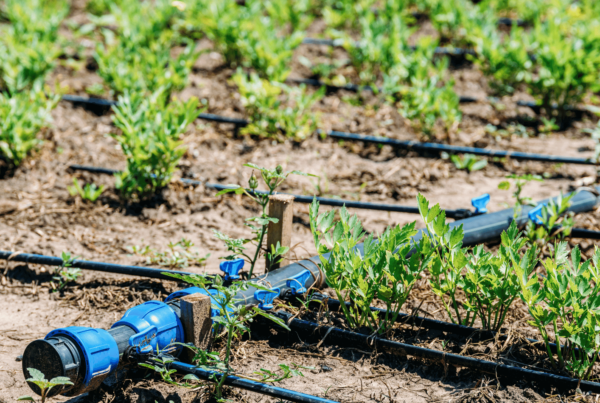2024 Heat ‘Dome’ – US Agricultural, Rural, and Urban areas expect prolonged drought and water shortages
Heatwaves, drought, and now a ‘heat dome’ is causing extreme temperatures and posing significant challenges for agriculture across North America, particularly in the southern and western regions of the US. What’s the impact on agricultural production so late in the growing season, and how can Sensoterra’s wireless soil moisture sensors support irrigation management to mitigate these effect of more extreme climate events.
What is a Heat Dome?
Beyond a heat wave, which is a prolonged period of excessively hot weather, which may be accompanied by high humidity. It is defined relative to the usual weather conditions of an area and the normal temperatures for the season. A heat dome is a high-pressure system acts like a lid or dome, trapping warm air over a region and causing the temperatures to rise continuously. These heat domes, exacerbate heat waves, and lead to more intense and longer-lasting heat events. They cause severe health risks, strain on infrastructure and energy supplies, and significantly impact agriculture and and urban water resources.
Impact on Agriculture Production
The extreme heat from the heat dome has several detrimental effects on the economics of agriculture, not only on plant production, but energy and labor costs associated with management of irrigation events.
- Stress on Crops: High temperatures cause heat stress, leading to wilting, slower growth rates, and reduced yield.
- Increased Water Demand: Crops need more frequent waterings, at effective application rates in order to cope with higher temperatures, putting additional pressure on already strained water resources.
- Soil Moisture Depletion: High temperatures increase evaporation rates, depleting soil moisture levels and leading to dry, compacted soils that are less conducive to healthy crop growth.
Impact on Urban Environments
During heat domes, the urban heat island (UHI) effect exacerbates the already high temperatures, leading to even more extreme conditions in cities.
- Energy Demand: Higher energy consumption contributes to increased greenhouse gas emissions.
- Water Supply: Increased water demand for cooling and hydration can strain municipal water supplies, and potential for water shortages and restrictions during prolonged heat events
- Green Spaces: Urban parks and green spaces can suffer from heat stress, leading to damaged vegetation and increased maintenance needs, and loss of tree cover exacerbates the UHI effect and reduces cooling provided by vegetation.



Irrigation and Optimized Water Application
Accurate and efficient water application are crucial under heat dome conditions. This is where Sensoterra’s smart solutions for water management come into play. Effective irrigation management is vital to mitigate the effects of extreme heat in agricultural, rural, and urban environments. This includes:
- Precision Irrigation: Utilizing smart wireless soil moisture sensors to ensure crops receive the right amount of water at the right time. These sensors provide real-time data, preventing over- or under-watering and conserving water resources.
- Drip Irrigation: Using drip irrigation systems to deliver water directly to plant roots, reducing evaporation and improving water use efficiency.
- Scheduling: Adjusting irrigation schedules based on real-time data from smart soil moisture sensors can optimize water use and ensure crops receive adequate moisture during critical growth stages.
The Importance of Measuring Soil Moisture
To effectively manage water resources and make informed decisions, land managers need reliable soil moisture data. Traditionally, monitoring systems have been expensive, complex to install, and difficult to integrate with other solutions. However, the emergence of smart, wireless IoT sensors is changing the game. These sensors offer significant advantages, making it easier and more affordable to monitor soil moisture levels in orchards and fields.


Sensoterra’s Wireless Soil Moisture Sensors
Sensoterra’s wireless soil moisture sensors several unique features, making them the go-to for smart water management
- Cost-Effectiveness: The sensors are low-cost, allowing land managers to deploy more sensors for less money. This increased coverage provides a more comprehensive view of soil moisture levels across the farm.
- Easy Data Retrieval: Hourly Volumetric Water Content % data is visible via the Sensoterra app – and data is built with an API first approach for seamless integration into ALL water management platforms.
- Simple Installation: Fast installation as sensors can be hammered into place, and require no additional tools
- Maintenance-Free: The built-in battery lasts 5-10 years, and ensures continuous and hassle-free monitoring without the need for any maintenance.
- High Accuracy: The sensors achieve high accuracy thanks to the soil lab, and our extensive lists of standard soil calibrations. This ensures that the data collected is precise and reliable.
- Versatility: Sensoterra offers sensors of different lengths to suit various land management applications, rooting depths, and management objectives.
About Sensoterra
Sensoterra develops low-cost, simple, and robust wireless soil moisture sensors, providing actionable insights that enable water management platforms and solutions. Our sensors are built to integrate into any platform with our unique ‘API first’ philosophy – offering freedom and flexibility for data integration. It is our mission to enable water management platforms and solutions worldwide. We help by ‘Making Sense of Water’. We produce simple, robust, and low-cost wireless soil moisture sensors that are easy to deploy and built to integrate. With proven success in the applications of smart city landscaping, environmental monitoring, and precision agriculture, the Sensoterra solution integrates seamlessly in existing water and land management platforms.
Learn more at www.sensoterra.com
Contact for more information, pictures and/or interview requests:
Jessica Nuboer
Marketing & Communications
Sensoterra
Email: [email protected]






